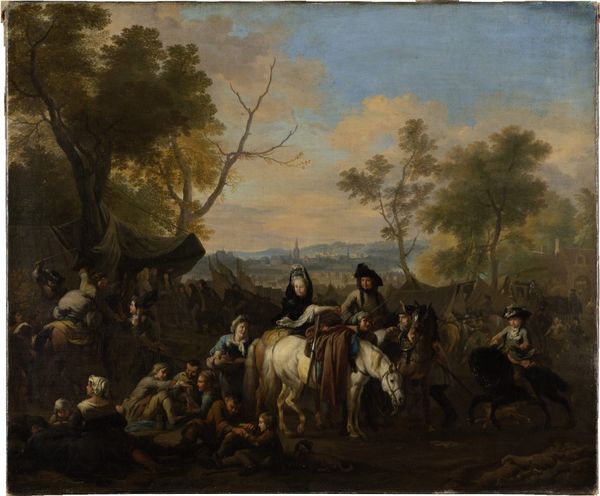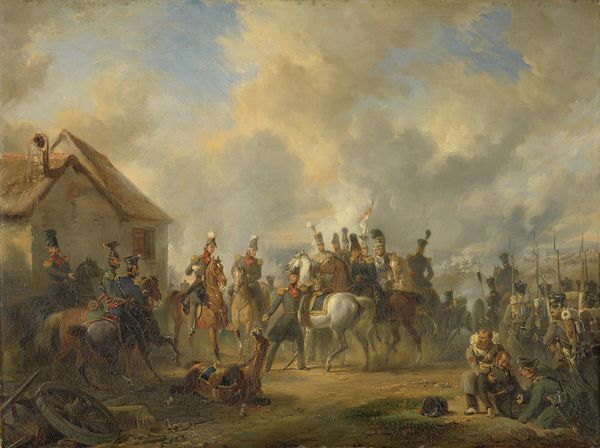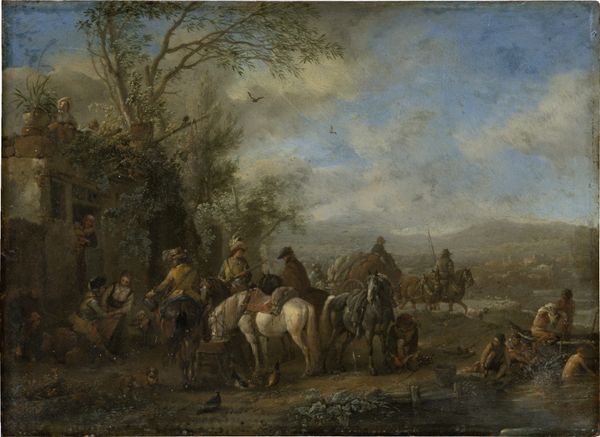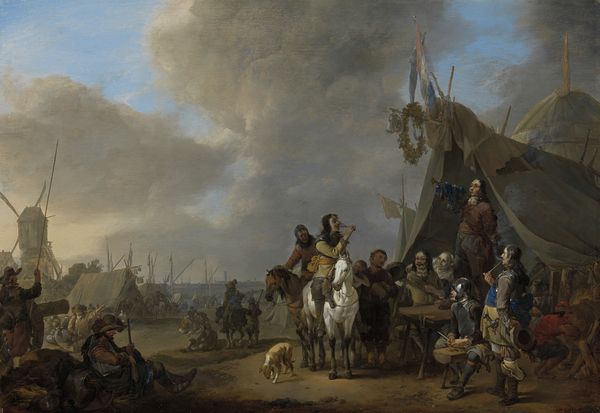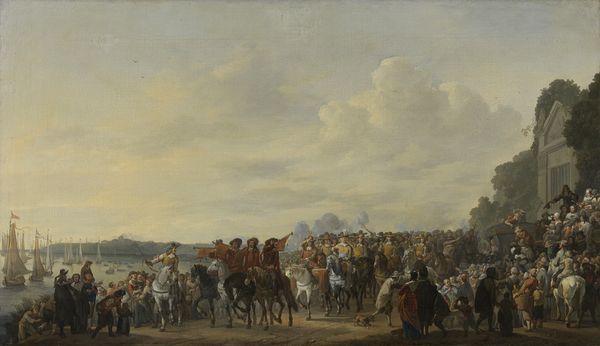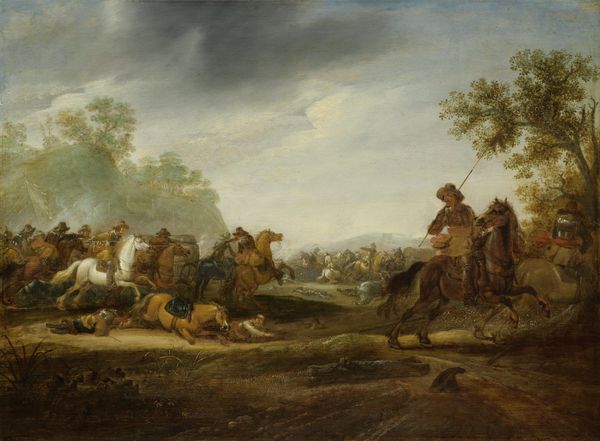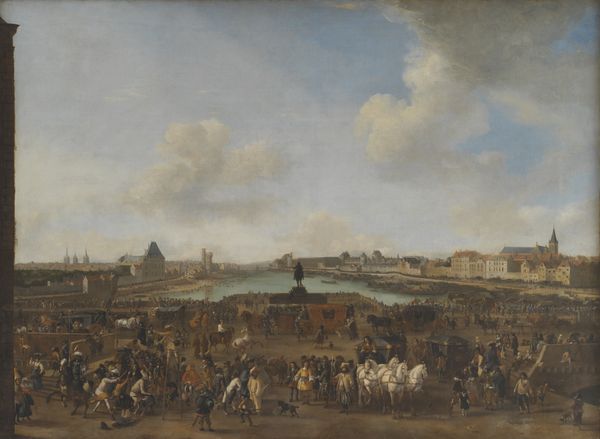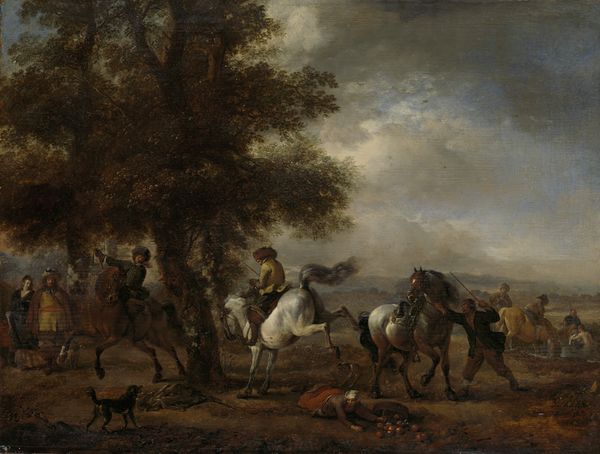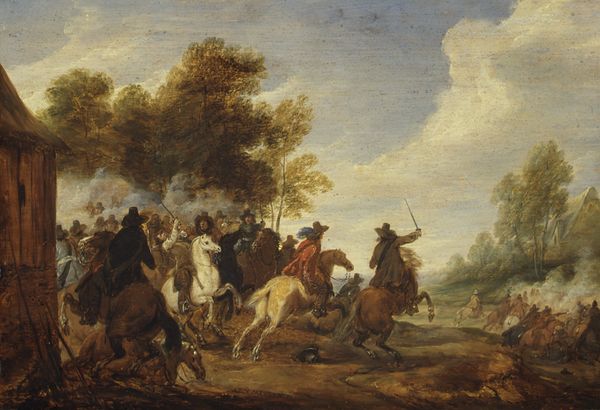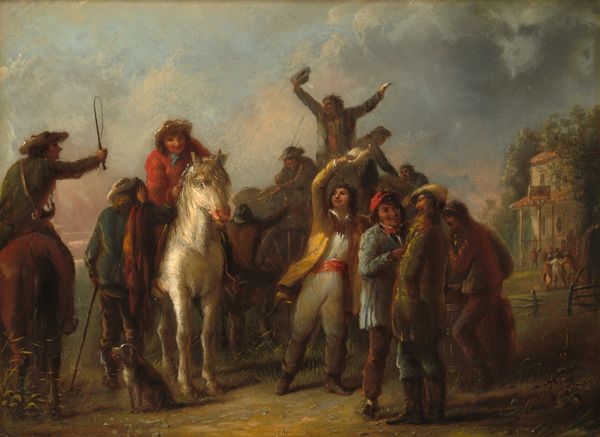
oil-paint
#
baroque
#
dutch-golden-age
#
oil-paint
#
landscape
#
figuration
#
oil painting
#
genre-painting
#
mixed media
#
realism
Dimensions: support height 41.8 cm, support width 49.2 cm, outer size depth 8 cm
Copyright: Rijks Museum: Open Domain
Curator: Before us hangs Philips Wouwerman’s "A Horse Fair near an Army Camp," an oil on canvas from approximately 1665 to 1668. Editor: There’s a remarkable looseness to the brushwork; look how the artist captures a sense of swirling activity within a very muted palette. It evokes a certain anxiety, a precariousness despite its genre-scene subject matter. Curator: Precisely. The painting's composition is structured around diagonal lines, drawing the eye from the foreground bustle toward a somewhat indistinct horizon. Note the use of impasto in rendering the white horse near the center; Wouwerman creates texture to emphasize the animal’s vitality. The dynamism is really created through materiality. Editor: And yet, despite all that activity, the figures and animals all seem caught within a historical moment steeped in uncertainty. Horses, of course, are classic symbols of war, virility, and even death, prominent across countless cultures from antiquity onwards. Curator: Indeed. The symbolic language around horses has clear semiotic presence. However, within the painting's construction itself, Wouwerman positions these symbols amidst tents and soldiers, rendering a temporary setting of military transit rather than outright battle or victory. The structure therefore underscores ambivalence. Editor: These horse fairs, then, take on the weight of transience. The animal changes hands as empires rise and fall. Notice how Wouwerman renders the distant tents; are those flags tattered, or simply blowing in the wind? The lack of clarity amplifies a visual language of ambiguity. Curator: Yes, his formal choices lead the eye to infer that sense of temporal displacement. Editor: So, in viewing a simple genre scene, Wouwerman’s construction of the painting prompts our thoughts toward war, displacement, the ephemeral nature of human existence, all mirrored by the movement and changing ownership of horses themselves. Curator: Quite so. Wouwerman presents us with far more than a mere snapshot of Dutch Golden Age life; he invites us to contemplate its subtle yet potent structural fragility. Editor: Ultimately, I’m left pondering how seemingly commonplace scenes gain profound power through art, revealing underlying anxieties and universal experiences.
Comments
No comments
Be the first to comment and join the conversation on the ultimate creative platform.
